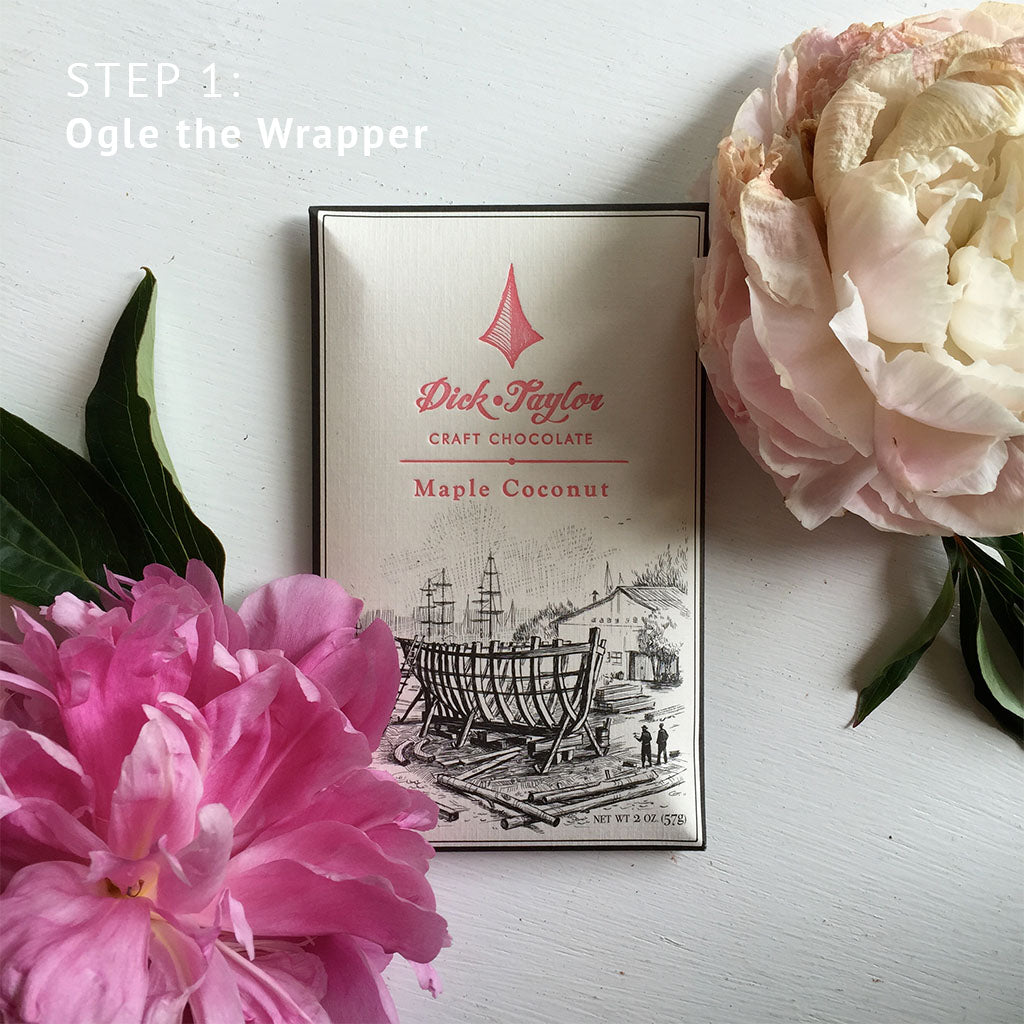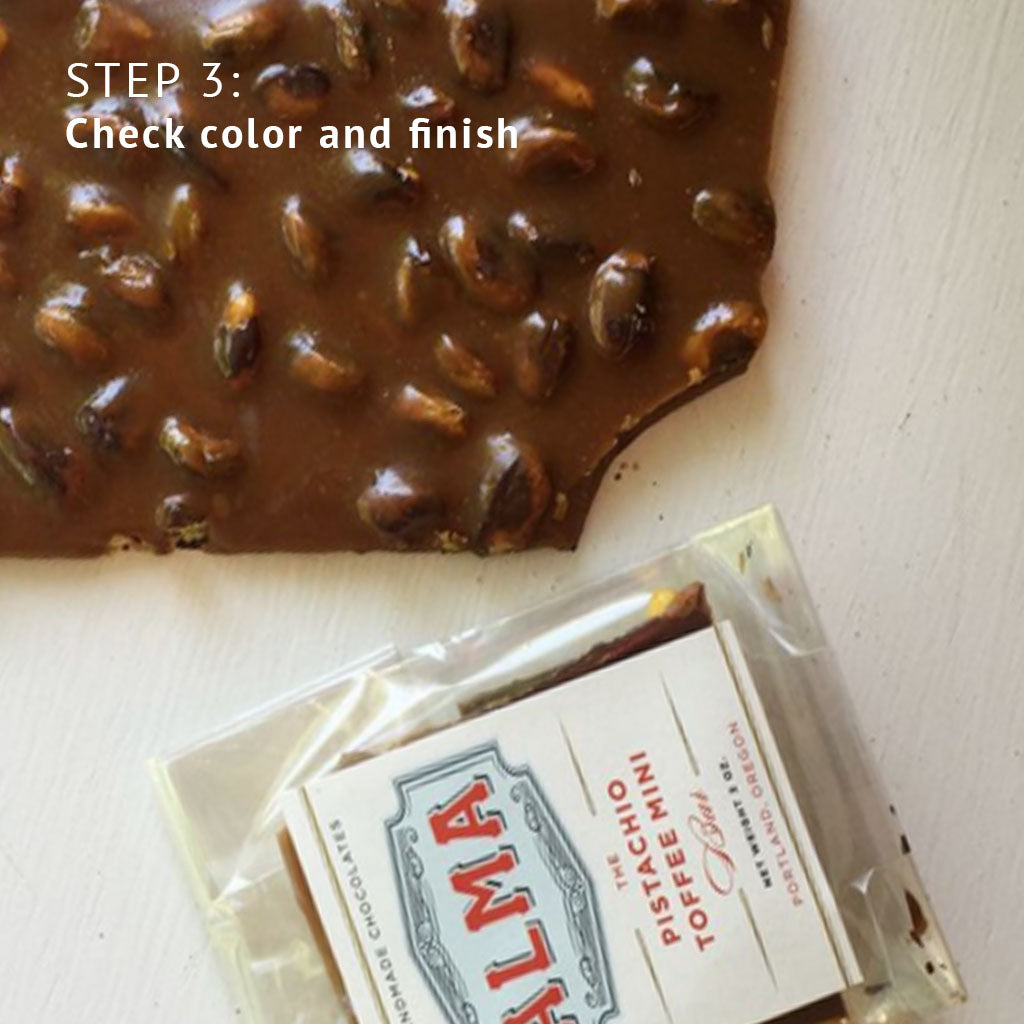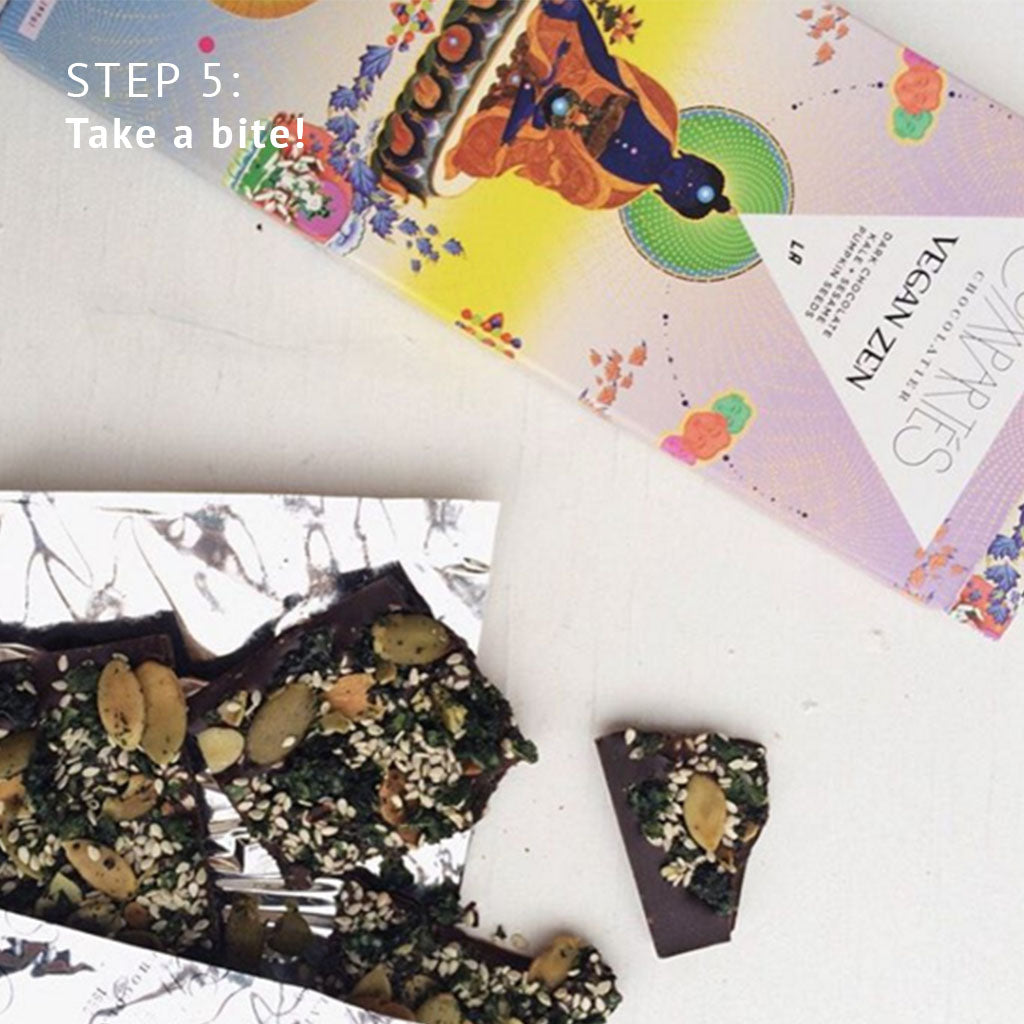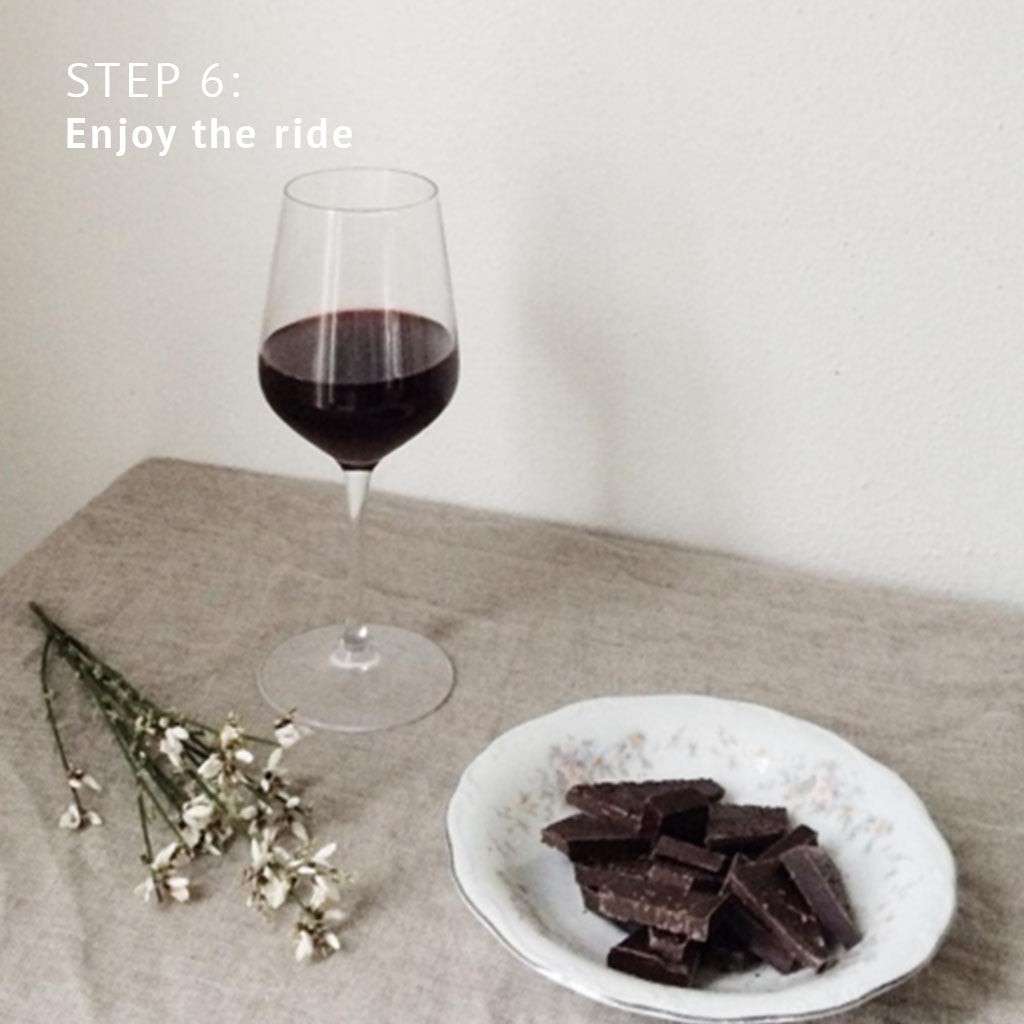How to: Eat a Chocolate Bar
Eating a well-made chocolate bar is not just about taste. Quality dark and milk chocolate bars invite all five senses to experience them. Here’s a guide to eating and appreciating fine chocolate bars!
Beauty matters. If you love the wrapper, respect that the aesthetic pleasure it offers you is a genuine aspect of the bar. Plus you learn a lot about the values of the chocolate maker from what is depicted and written on the label.
Think of this as undressing someone. Craft chocolate bars may have ingeniously designed packages with high quality paper enclosing delicate foils, all of which offer a sensual experience. Notice the bar mold. How pretty is your bar? How happy, how filled with anticipation, does looking at the bar make you?
Color: Blond, black, chestnut, oxblood—every dark chocolate has its own color. Darker brown can indicate longer roast or higher temperature roast. The color of the bar is also a reflection of the type of cacao bean used. The same goes for artisan milk chocolate bars, but the colors here is effected the amount of powdered milk used in the blend.
Finish: The mirror of the bar, that gloss or matte finish that tells you about the condition of the bar and the mouth feel of that style of chocolate. The coloring and texture should be uniform. If the chocolate is dull with grayish spots and/or streaks, it may have bloomed. Storing chocolate at the wrong temperatures (above 70 degrees) can create sugar and/or fat bloom. Bloomed chocolate is edible, just not very pretty or tasty.

Break your bar. How hard, how soft? Snap is sort of a feel-sound, a moment in time that your ears and the fine-tuned motors of your fingers muscles give you immense amounts of information about how homogeneously interlaced are the cocoa butter crystals, how finely ground the particle size of the cocoa solids. The snap will teach you about how the chocolate will behave in your mouth. And the snap of good chocolate is a lovely sound; oscillating between the reassuring solid thump of a Mercedes Benz door and the tinny crackling of a sheet of ice on a frozen pond.
Raise the newly broken chocolate to your nose and take in the chocolate’s entire aroma. What comes up to your nose and to your mind before you even put it in your mouth? Chocolate can smell fruity, nutty, smoky, bitter, spicy, earthy/vegetal, floral and more.
…and follow the chocolate wherever it leads you. Crunch the bar once or five times with your teeth if you like, but do not swallow. Press the chocolate up against the roof of your mouth and let it unravel its mysteries. Open your mouth, breath. Close your mouth, breath. Let the chocolate melt. Breath. Close your eyes. Breath again. Meditate with your mouth. Note smoothness, grittiness, melting-point and the thousands of other textural dimensions.
As with tasting wine, the flavor of chocolate has an arc. The moment you put it in your mouth and it begins to melt; what do you taste? Say words out loud—whatever comes to mind. Hickory, banana, timothy grass… If a smell or flavor sparks an image or a word, accept whatever wells up from deep within your mind’s limbic system as a bona-fide flavor. Do not second-guess your senses. Acknowledge the flavors that drift into your consciousness with spoken words. This helps your mind help you to unravel flavors so subtle, so unlikely, so satisfying that only a primal consciousness could imagine them.
Now that your senses have had a moment to find their bearings, the chocolate is well on its way to being completely melted. What is happening in your mouth? The chocolate is your ride, so let go and see where it takes you. That’s why we travel: not just for the pleasure, but for those little discoveries that leave us a little different when we get back.







